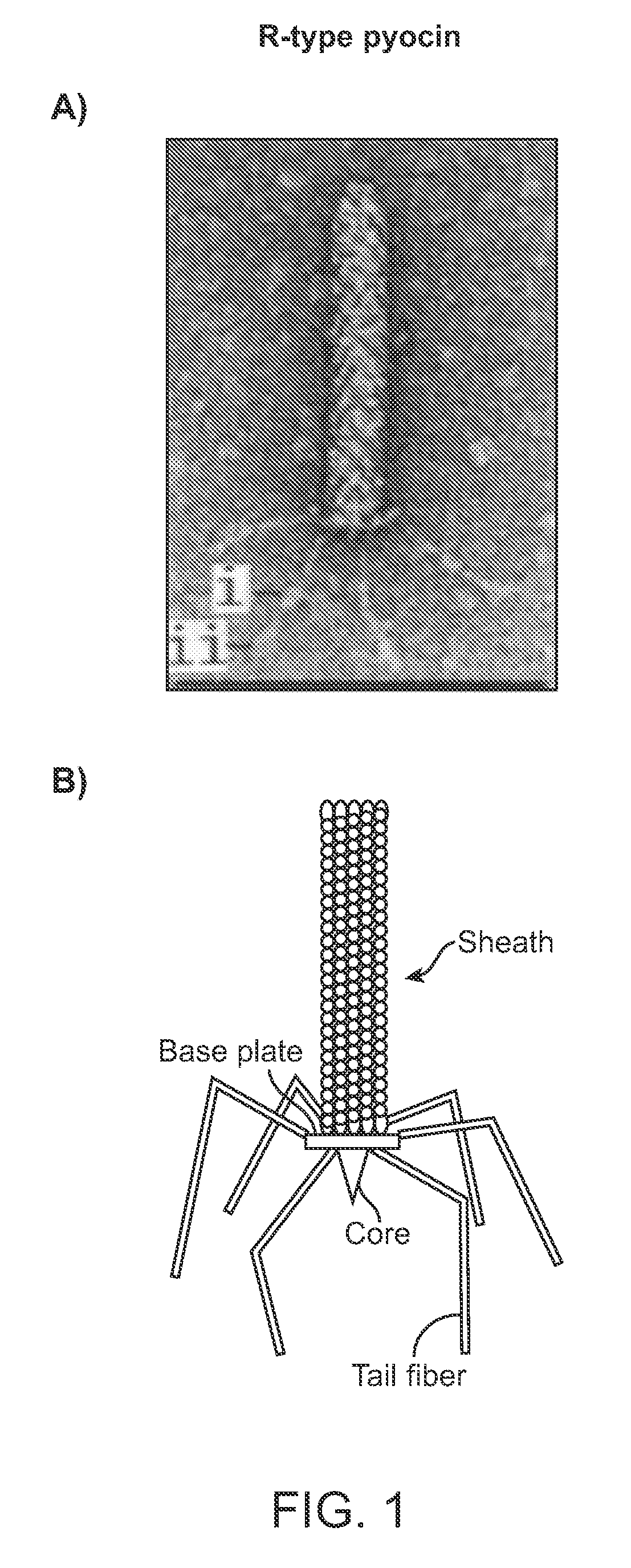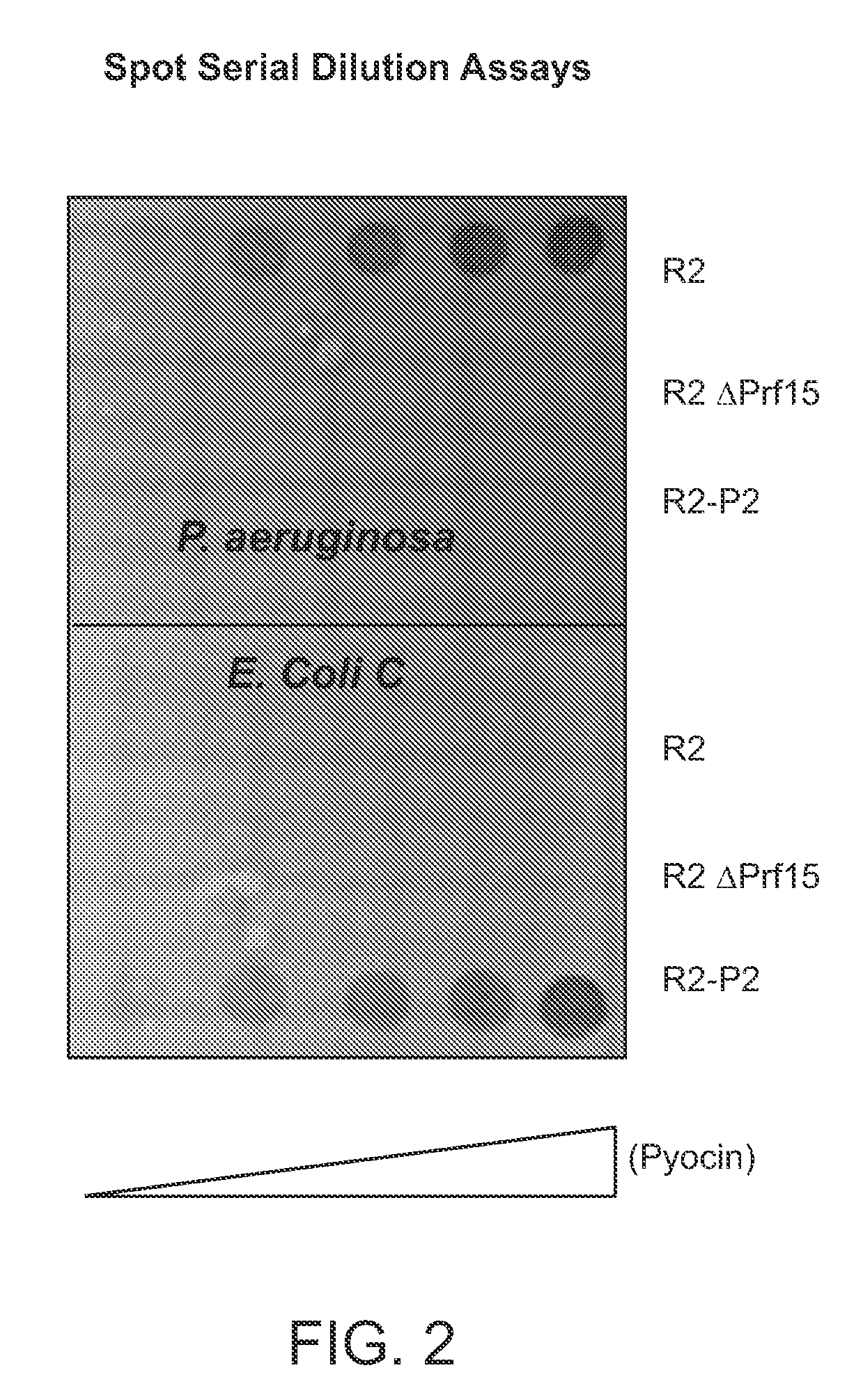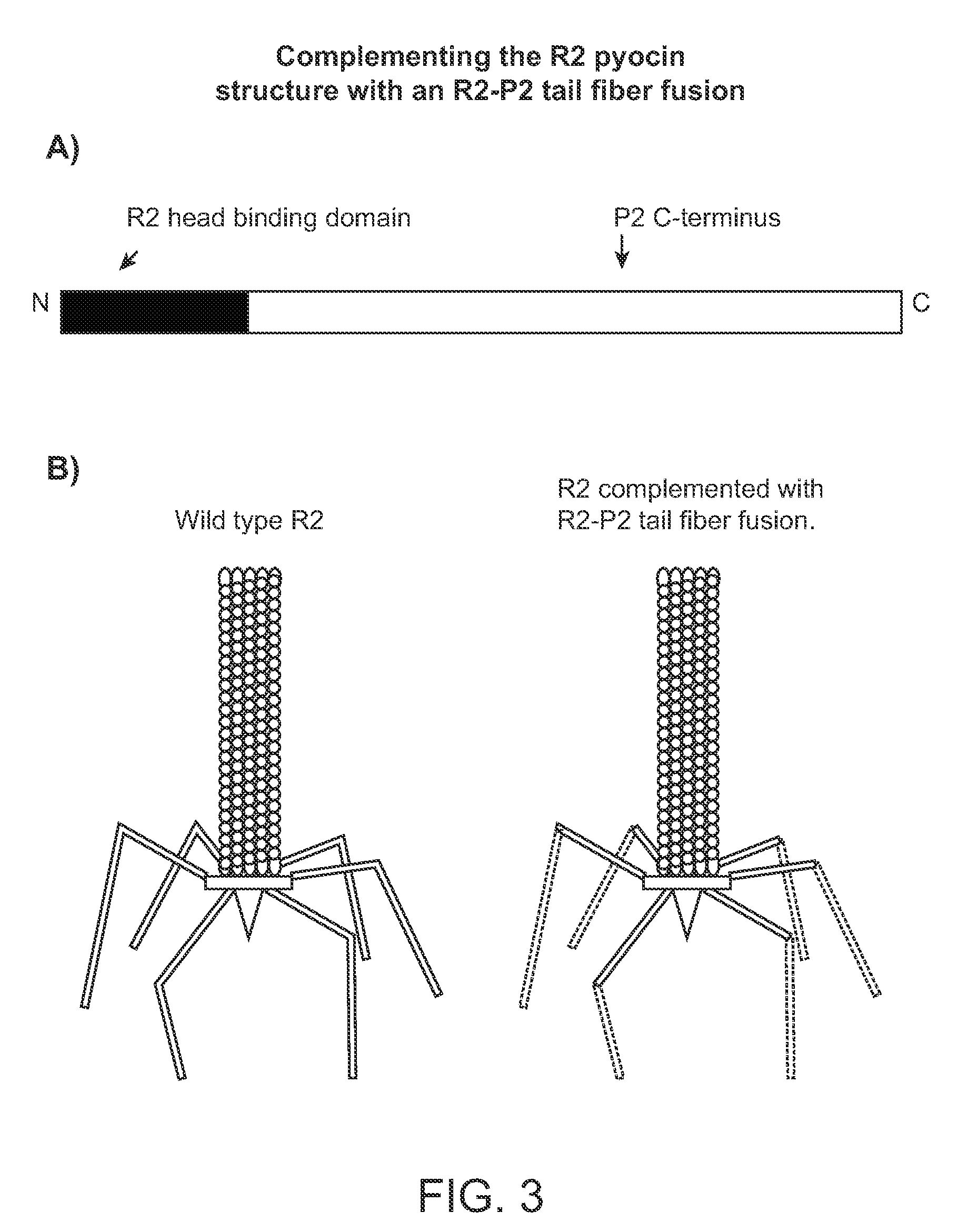Modified bacteriocins and methods for their use
a technology of hmw bacteriocin and modified form, which is applied in the field of modified forms of naturally occurring high molecular weight (hmw) hmw hmw hmw hmw hmw hmw hmw hmw hmw hmw hmw hmw hmw hmw hmw hmw hmw hmw hmw
- Summary
- Abstract
- Description
- Claims
- Application Information
AI Technical Summary
Benefits of technology
Problems solved by technology
Method used
Image
Examples
example 1
Modified hmw Bacteriocins Containing a Fusion Protein
a) Complementation System
[0160]To facilitate the preparation of a modified hmw bacteriocin as described herein, construction of a system to complement tail fibers in trans was established. Using the R2 pyocin as a representative model, creation of a deletion of the R2 prf15 coding sequence in the P. aeruginosa PAO1 genome was used to create a platform in which a complementing tail fiber protein, such as a modified prf15 gene product, was expressed in trans.
[0161]Generally, the deletion was made by the method of Hoang et al. to create P. aeruginosa strain PAO1Δprf15. The prf16 coding region, SEQ ID NO:4, for the R2 chaperone overlaps the end of the R2 prf15 gene by 8 nucleotides and the ribosome binding site lies within the prf15 coding region, SEQ ID NO:3. The PRF16 protein, which is not necessarily incorporated into the pyocin structure, has been reported to be required for assembly of the trimeric tail fiber and thus for maximum...
example 2
Assays of Fusion Proteins
a) Pyocin Purification and Assays
[0201]PAO1 or appropriate derivatives were grown shaking at 200 rpm at 37° C. in G medium supplemented with 50 μg / ml gentamicin when needed to maintain plasmids. When the cultures reached OD600 of about 0.250, mitomycin C was added to a final concentration of 3 μg / ml. Cultures were incubated for an addition 2.5 hours until lysis occurred. Five units (1 unit / μl) of DNaseI (Invitrogen) was added to 200 ml of culture, and the culture was allowed to incubate an additional 30 mins. Debris was removed by centrifugation at 12,000 rpm in a Beckman JLA-16.250 rotor for 1 hour. Saturated ammonium sulfate was slowly added, at a rate of 1 ml / min, to the supernatant stirring on ice, to a final added volume of 65 ml per 100 ml of the supernatant of the lysate. This was stored at 4° C. overnight. The ammonium sulfate precipitate was collected by centrifugation at 12,000 rpm in a Beckman JA-25.50 rotor for 1 hour, 4° C., and the pellet was r...
example 3
Recombinant Bacteriophages to Screen Engineered Tail Fibers
[0204]The P4 bacteriophage was used as a surrogate to harbor a tail fiber fusion gene such that the genotype was coupled to the binding phenotype of the tail fiber. This has allowed efficient selection, transduction and isolation of the gene for the desired tail fiber.
[0205]Bacteriophage P2 is a temperate coliphage which can infect other enteric species, and can replicate in, but not infect, P. aeruginosa (Bertani & Six, 1988; Kahn et al., 1991). R-type pyocins are closely related genetically and structurally to P2, and the P2 tail fiber protein, encoded by gene H, shows homology to PRF15 at the N-terminal portion, where base plate attachment occurs (Haggard-Ljungquist et al., 1992; Nakayama et al., 2000). Deploying the P2 or P4 bacteriophage as a surrogate phage, in which plasmid-encoded tail fibers were incorporated in the phage particle in place of the P2 phage-encoded fibers, permitted the display and selection of fusion...
PUM
| Property | Measurement | Unit |
|---|---|---|
| optical density | aaaaa | aaaaa |
| concentration | aaaaa | aaaaa |
| pH | aaaaa | aaaaa |
Abstract
Description
Claims
Application Information
 Login to View More
Login to View More - R&D
- Intellectual Property
- Life Sciences
- Materials
- Tech Scout
- Unparalleled Data Quality
- Higher Quality Content
- 60% Fewer Hallucinations
Browse by: Latest US Patents, China's latest patents, Technical Efficacy Thesaurus, Application Domain, Technology Topic, Popular Technical Reports.
© 2025 PatSnap. All rights reserved.Legal|Privacy policy|Modern Slavery Act Transparency Statement|Sitemap|About US| Contact US: help@patsnap.com



